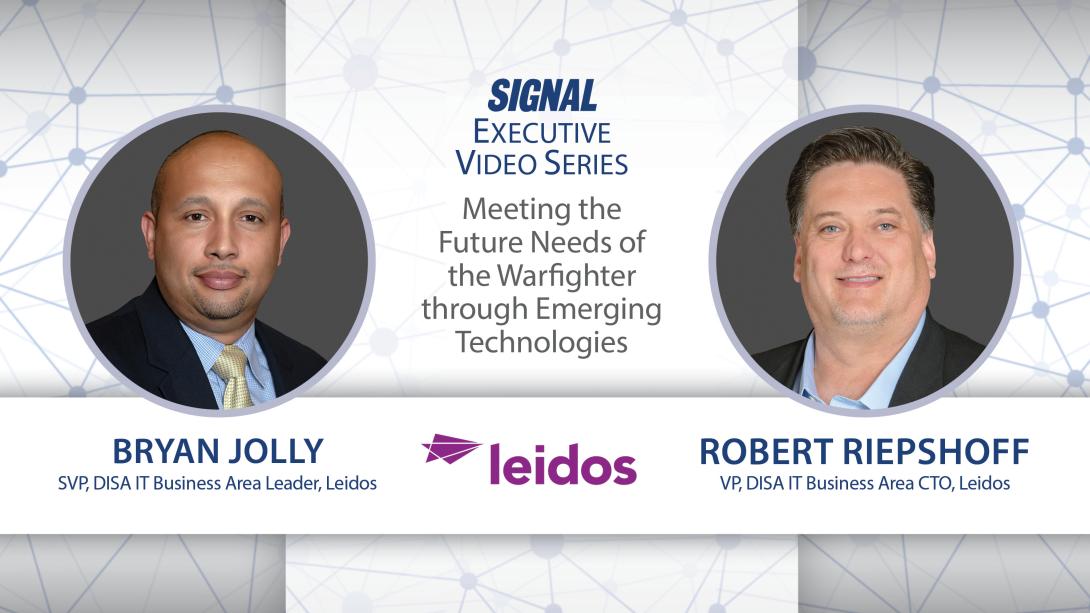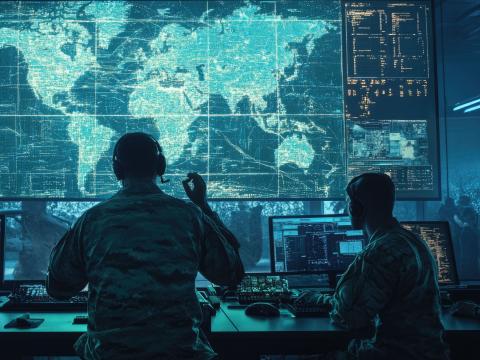Agile Innovation and Collaboration Are Key to Mission Success
Leidos, a defense technology company, is committed to delivering solutions at speed and scale in today’s rapidly evolving national security landscape. Two leaders with Leidos’ Defense Information Systems Agency (DISA) IT business area sat down with Nuray Taylor, SIGNAL Media senior reporter and special projects manager, to discuss how Leidos is fostering innovation and collaboration to support the warfighter.
“At Leidos, we're really evolving into an orchestrator of innovation. That means bringing together diverse skill sets, innovative approaches, as well as available technologies from our industry partners, from our government customers and academia to make sure we have the right fit for the mission that we have to achieve for our customer,” said Bryan Jolly, senior vice president and business area leader at DISA IT business area.
Bob Riepshoff, chief technology officer at DISA IT business area, said Leidos is heavily investing in cloud, network, cyber, information advantage, digital user experience and application modernization. Specifically, the focus is on delivering repeatable offerings and providing the same functions to all customers.
To serve the warfighter, Jolly said Leidos is making strides toward becoming a more agile technology provider.
“We've entered into a lot of conversations with our customers around outcome-based contracting or being able to provide capacity-based models where we're able to shorten that time between the traditional requirement coming in, because that requirement is very dynamic, and the solution delivery that typically would take months to provide,” Jolly explained. “We're doing that in weeks, in some cases, in order to meet that speed of the requirement fulfillment.”
Jolly said Leidos is specifically focusing on data and applied artificial intelligence (AI), selecting and applying large language models for particular problem sets. Working with the Pentagon and intelligence agencies, Leidos encounters everything from cutting-edge systems to 30-year-old technologies, and the goal is to apply AI correctly to all parts of each system.
“At Leidos, we're spending a lot of time being very deliberate around ensuring our workforce is trained, whether it's immersive training, AI/ML [artificial intelligence/machine learning], up-scaling, cyber ranges, as well as rotation of talent, to ensure that our people are the right types of people that will grab that new technology and apply it securely, safely and effectively to our programs,” Riepshoff said.
Across the corporation, Riepshoff said standardizing, securing and sharing data with allies and partners via Leidos data products is a main goal.
As the need for robust cybersecurity measures increases, Leidos has implemented a solution architect program that teaches employees about cybersecurity from the get-go.
“From design all the way through operations, title, entire life-cycle management, we're integrating cybersecurity and security in general into all things that we do, so it's not an afterthought,” Riepshoff said.
Leidos is also building frameworks and design patterns that can be repeated for different deployments, keeping the same level of security.
Jolly said one of the biggest concerns is protecting the entire ecosystem of Leidos’ solutions and securing the supply chain because the company works with hundreds of partners and suppliers who deliver components and materials for the solutions.
As the cyber landscape changes with artificial intelligence, legacy rules-based and signature-based prevention systems are no longer holding up, Riepshoff emphasized. Malicious actors are using open-source AI tools to attack faster with more sophistication.
Despite the threats of cyber actors, Riepshoff said the conversations and collaboration with industry partners and government customers have been encouraging, as they all work together to innovate and deliver capabilities to the warfighter.
“We're here to partner with our customers,” Jolly said. “We're here to apply all of the great technology you hear about in a meaningful way to make sure that we have a mission impact.”





Comments